Hanoi, October 14, 2025 – The IKI Interface Viet Nam Workshop 2025, held today at the Hanoi Convention Center, convened over 80 participants to explore intersectoral cooperation and investment mobilisation for climate action and biodiversity conservation. The workshop’s theme, “Green Transformation of Businesses to Protect Climate and Biodiversity,” underscored the critical role of the private sector as a key driver for translating Viet Nam’s climate and biodiversity commitments into tangible action.
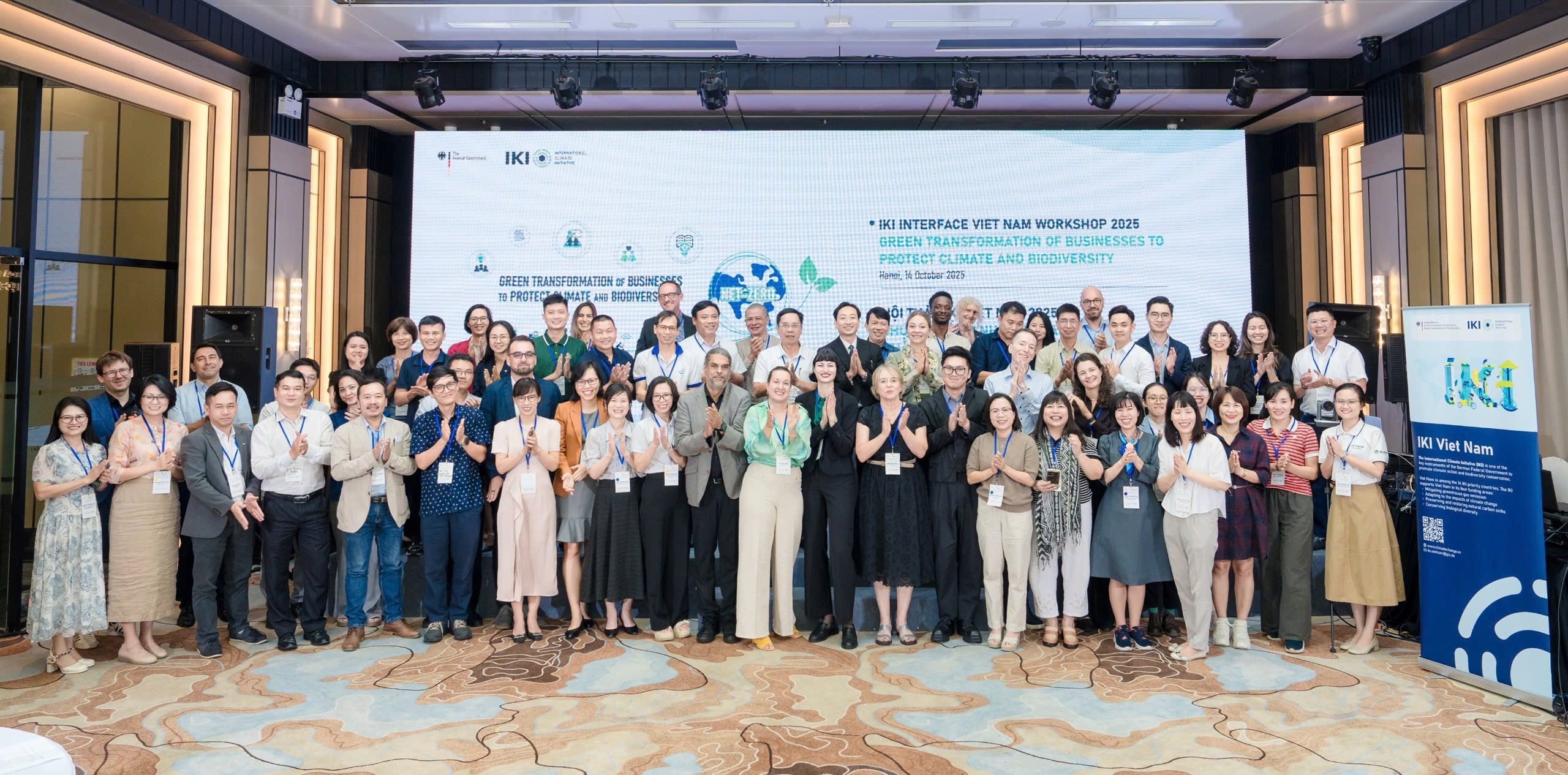
Implementers from 19 IKI projects, representatives from Vietnamese and German ministries and organisations, and 38 enterprises from various industries attended the workshop. The agenda featured keynotes on the IKI strategy for private sector engagement and the enabling environment for private economic development opportunities in Viet Nam. These were complemented by presentations focusing on the role of women in climate change adaptation, investments for scaling climate protection and biodiversity conservation.
Through this platform, the IKI echoes its strategic objective and long-lasting interest in engaging with the private sector in the country. “IKI projects in Viet Nam already cooperate and work in meaningful ways with businesses and business associations within their respective sectors. The IKI has set itself an ambitious target to leverage 1.5 billion EUR private investments until 2030. Today’s workshop reinforced the dialogue of the IKI implementing organisations with the businesses community to maximise the contribution of the IKI to redirect private investments to the green transition.”, shared Daniel Herrmann, Chief Technical Advisor of the IKI Interface project, GIZ.
Furthermore, the workshop introduced break-out groups, bringing together different perspectives to examine common goals and challenges. In the morning, participants joined discussions on how to build synergy between enterprises and IKI implementers, under four aspects: Policy & Regulation, Technology & Innovation, Finance & Incentives, and Capacity Building. Later in the afternoon session, the floor was given to panelist discussions, where the speakers shared insights on how to mobilise private sector investment for climate protection, climate change adaptation, and biodiversity conservation.
“This is my first time joining the IKI Workshop, which provides me with an opportunity to connect with IKI projects in Viet Nam that are normally beyond my network. Today, I made new connections and had insightful exchanges with people working in biodiversity conservation and climate change — not only from IKI projects but also from other enterprises. With its focus on biodiversity conservation and climate change adaptation, IKI’s strategy aligns closely with our mission and interests,” stated Nguyen Quoc Dat, Co-founder and Creative Director of Think Playground.
The IKI Interface Workshop 2025 provided a space for mutual understanding and actualising solutions towards a sustainable transition to a decarbonised and biodiverse future. As one of the focal audiences, enterprises at the workshop were able to disclose their needs and priorities for enabling frameworks, explore partnership opportunities, and gain actionable insights into trends and incentives for climate-friendly and biodiversity-positive business models.
The IKI Interface Viet Nam Workshop is an annual event for networking and knowledge exchange by IKI Viet Nam.
About IKI Viet Nam: The International Climate Initiative (IKI) is an important part of the German government’s international climate finance commitment, anchored in the Federal Ministry for the Environment, Climate Action, Nature Conservation and Nuclear Safety (BMUKN). The IKI portfolio in Viet Nam currently comprises 22 ongoing bilateral, regional, and global projects under four funding areas: Mitigating greenhouse gas emissions; Adaptation to the impacts of climate change; Preserving and restoring carbon sinks; and Conserving biological diversity.
For more information on IKI Viet Nam, please visit: International Climate Initiative (IKI) in Viet Nam
Some photos at the event:
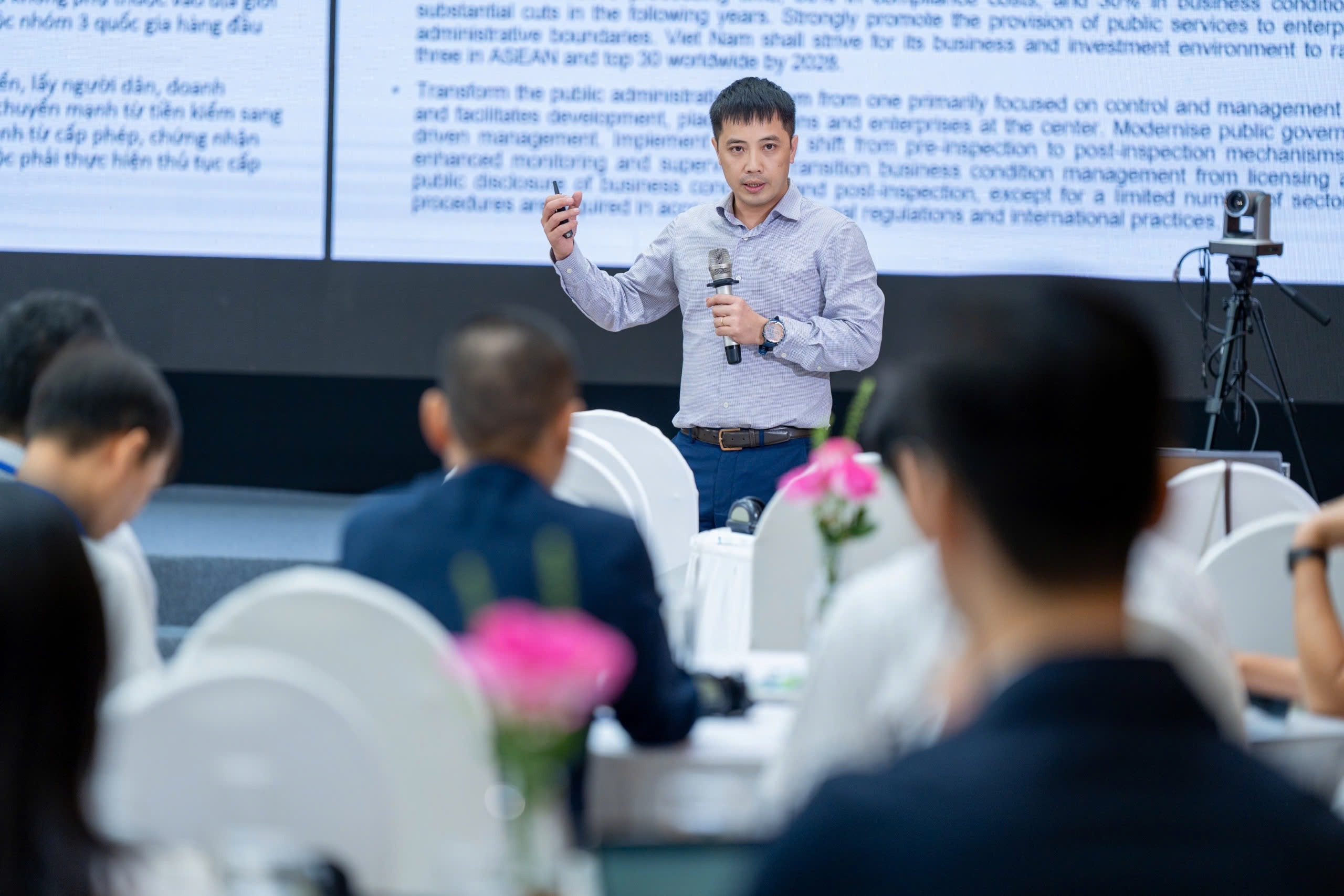



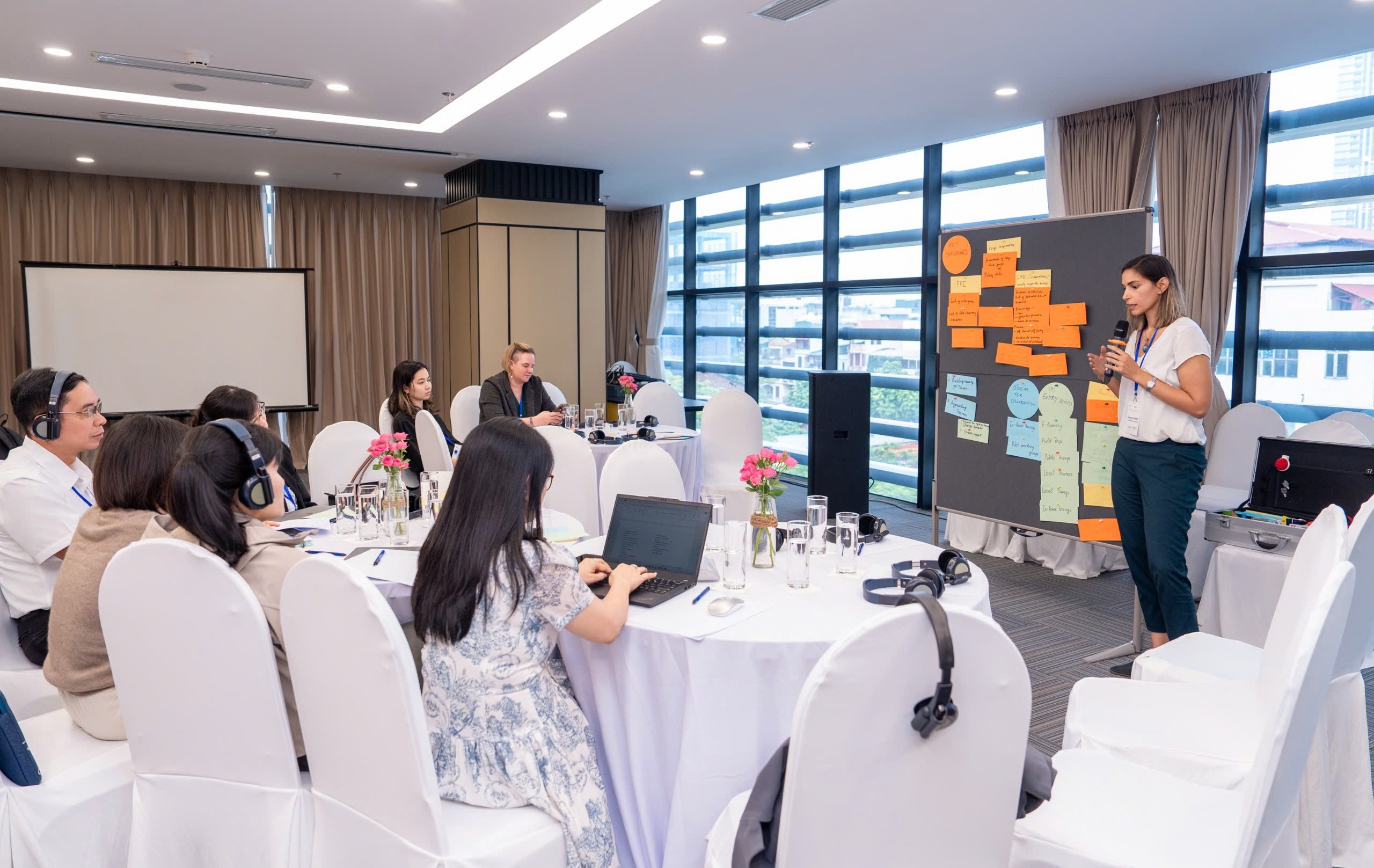
RENAC has officially launched the third phase of its Green Banking Project, a scholarship-based training programme designed to expand sustainable finance expertise worldwide.
Since 2015, the Green Banking Project has trained financial institutions across Southeast Asia and Latin America to fund renewable energy (RE) and energy efficiency (EE) projects. Its first two phases (2015–2022) improved banks’ ability to evaluate risks, mobilise capital, and scale clean-energy investments.
The third phase, announced at the project launch event in Hanoi on 9 July, 2025, adds new areas of focus: Green Hydrogen applications, financing for small-scale green energy projects, and specialised modules for project developers. These additions respond to market demand for both advanced technologies and practical financing strategies.
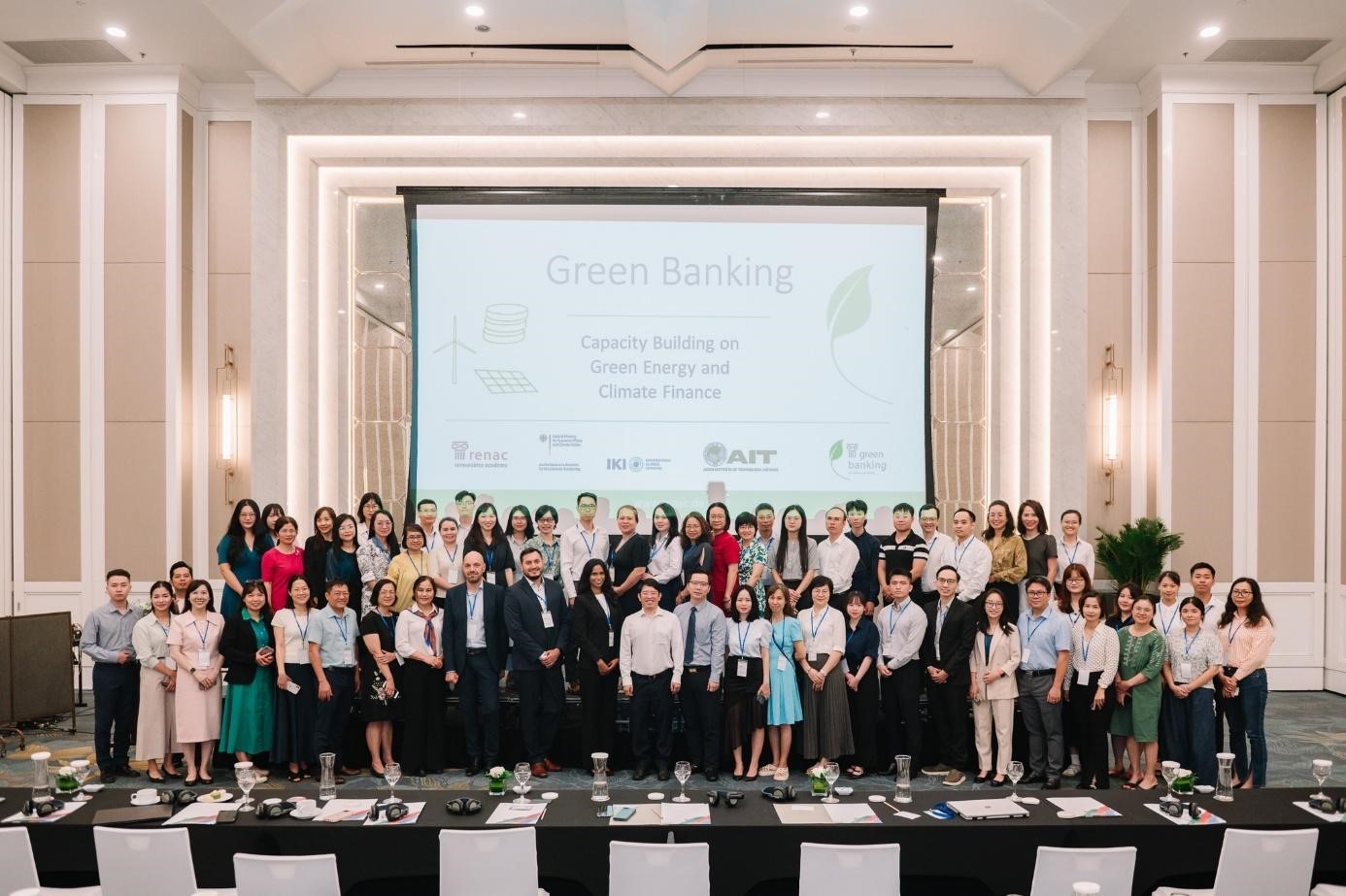
The third phase of Green Banking will be implemented in South Africa, Kenya, Brazil, Colombia, Indonesia, and Viet Nam. Through partnerships with the IFC Green Banking Academy, the IFC Alliance for Green Commercial Banks, and the Private Finance Advisory Network, RENAC will award 100 scholarships per country over the project’s lifetime.
These scholarships will give bankers, investors, project developers, and policymakers direct access to high-level training in green finance, ensuring that expertise reaches every stage of the clean-energy investment cycle.
Apply now for the Applying Green Energy Finance Scholarship
A flagship component of this phase is the three-month online course “Applying Green Energy Finance for Small Scale Applications” (AGEF), running from November 2025 to February 2026. Applications are open until 1 October 2025 and interested participants may apply for a scholarship here: https://form.jotform.com/RENAC/GB_Apply_Agef_Small_Scale_OT
The AGEF equips participants to:
- Select appropriate RE and EE technologies for small-scale projects.
- Evaluate business models and financing options to make these projects bankable.
The course is ideal for:
- Finance professionals, bankers, and investors funding green projects.
- Project developers and energy companies seeking financing and managing project economics.
- Renewable energy analysts assessing risk and performance.
- Consultants, policymakers, and regulators shaping strategies and incentives.
By focusing on small-scale applications, AGEF addresses a critical challenge: mobilising capital for distributed renewable and efficient projects that often struggle to attract traditional lending.
As countries push toward net-zero targets, access to finance remains a decisive barrier. The Green Banking Project strengthens the capacity of financial and energy professionals to identify viable projects and structure innovative financing, turning climate goals into real investments.
Pictures from the Green Banking Launch Event in Viet Nam:
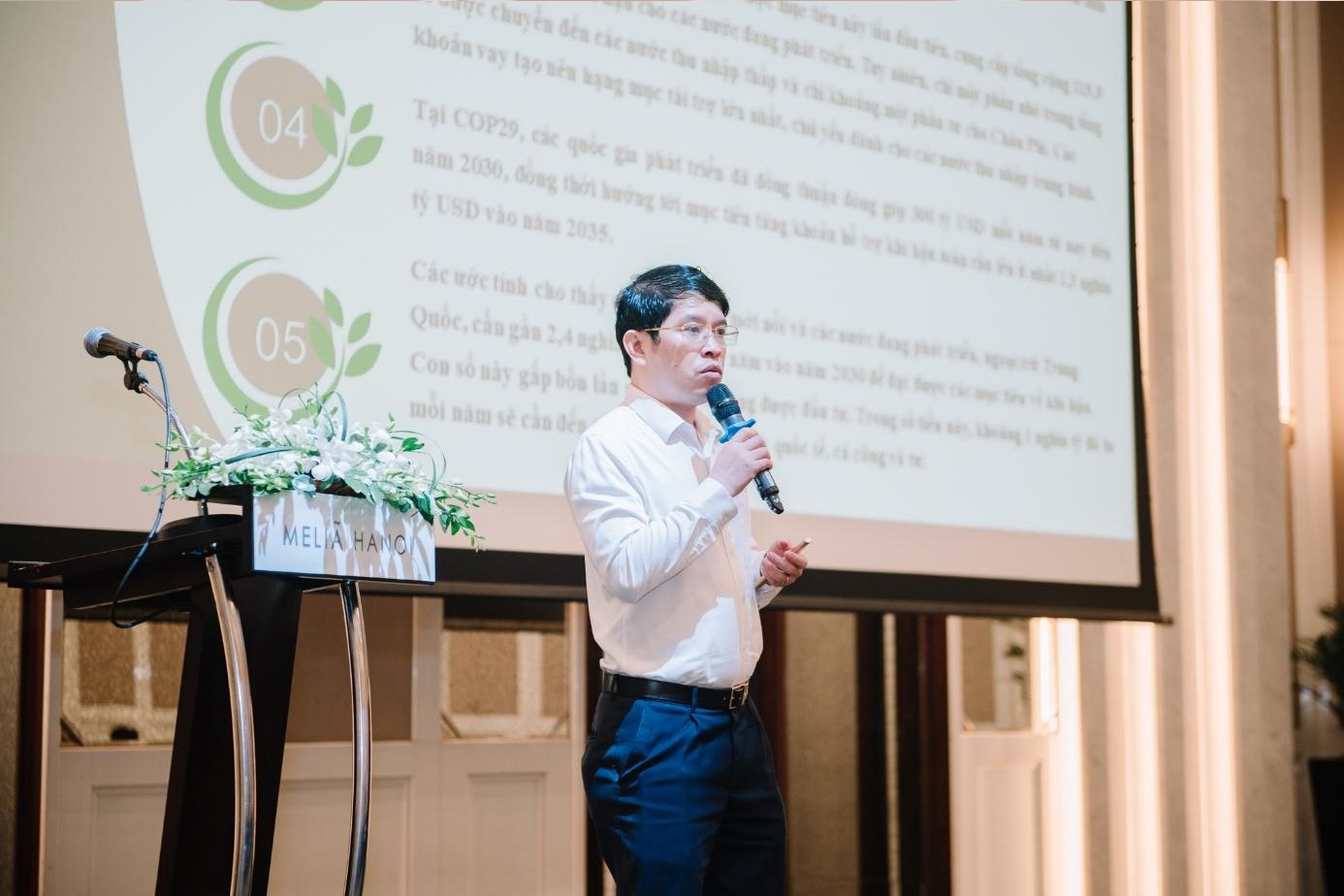
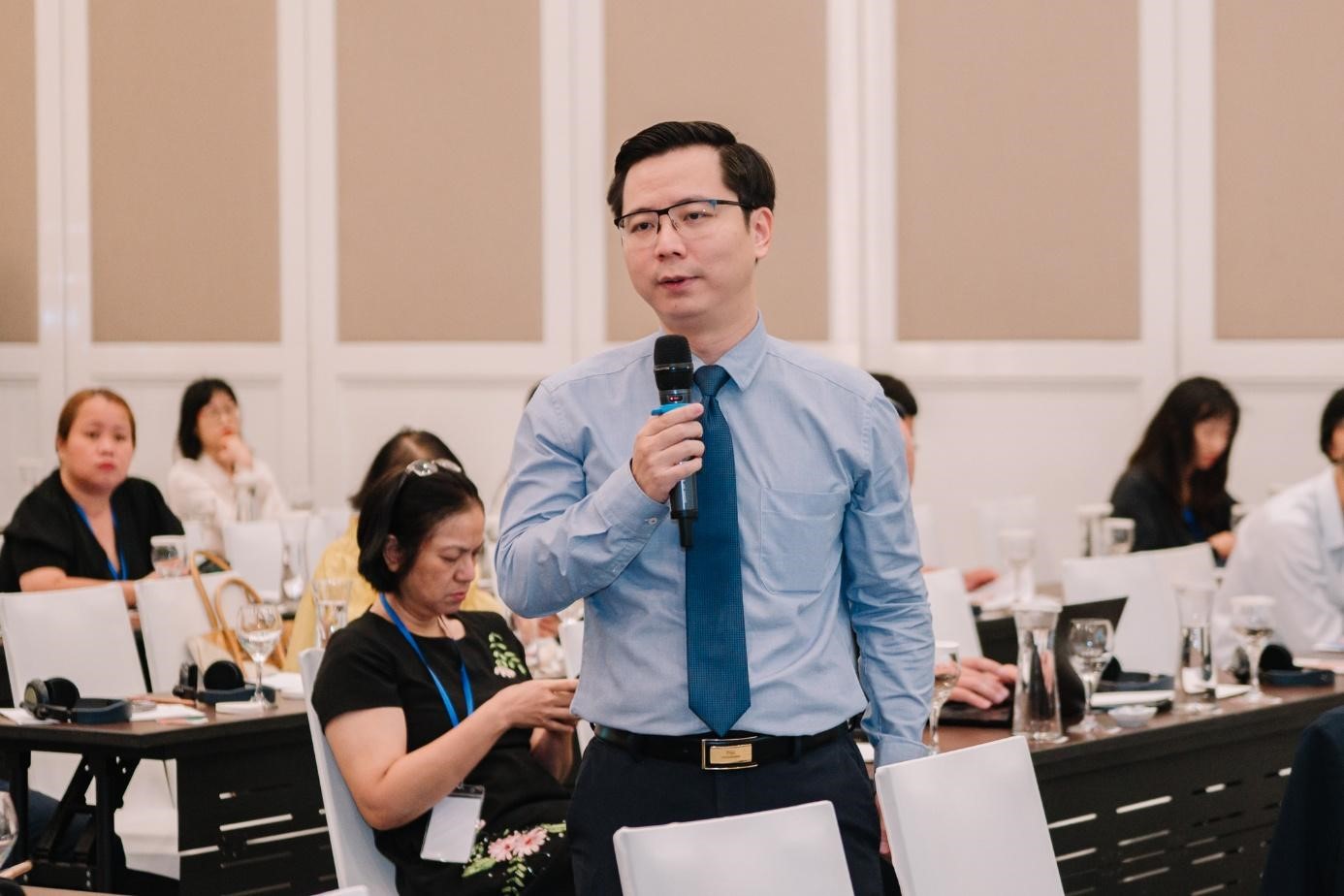
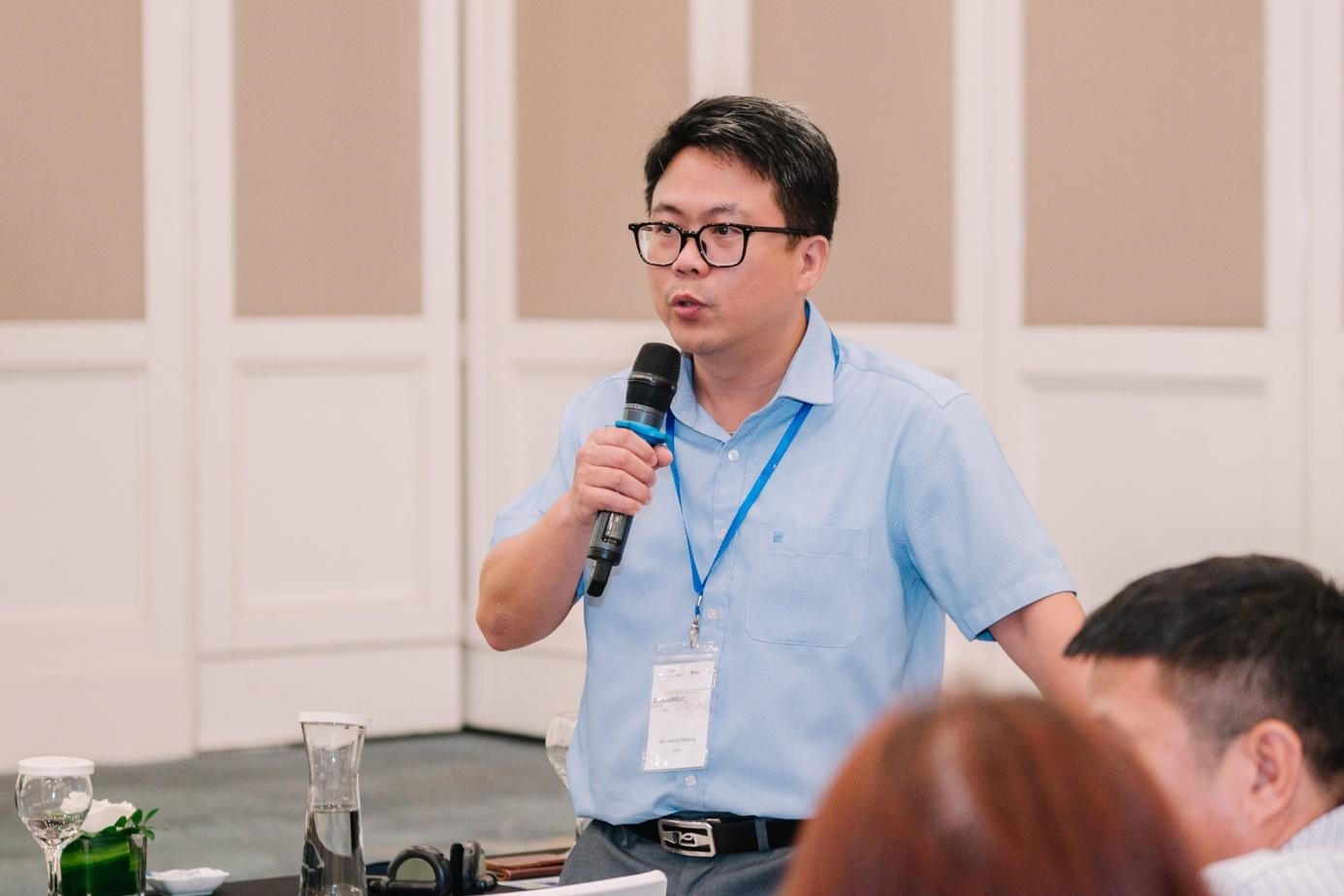
Please visit the Green Banking project website for more information about upcoming activities: https://www.renac.de/projects/current-projects/green-banking-project
For more information about the project, please visit: Green Banking – Capacity Building for Green Energy and Climate Finance | Internationale Klimaschutzinitiative (IKI)
The IKI Interface Viet Nam Workshop 2025 will take place on 14 October accompanied by a networking event on the previous day.
This year’s workshop theme is “Green Transformation of Businesses to Protect Climate and Biodiversity” It highlights enterprises as a driver for turning Viet Nam’s climate and biodiversity commitments into action. The workshop will gather representatives from IKI projects, Vietnamese and German ministries and businesses to look into ambitious but credible pathways for climate action and biodiversity conservation.
Find more details here: 2025 IKI Interface Viet Nam Workshop – International Climate Initiative (IKI) in Viet Nam
It was a classic vista: the mild December sun setting over the vast wetlands of Tram Chim National Park in the Dong Thap province of Viet Nam – the horizon awash in hues of amber and gold. The sky is alive with the flight of over 1,000 1.8-metre-tall sarus cranes (Antigone antigone), with their graceful silhouettes dancing across the pastel background of the Mekong Delta, as they journey on their migration from their breeding grounds in Cambodia.
This was a typical sunset scene in 1988, but such a sight has not been seen in nearly 40 years.
The loss of key plant species in the Tram Chim wetland ecosystem has caused the number of returning birds to plummet. By 2022, not a single sarus crane – the world’s tallest flying bird and a symbol of Dong Thap’s natural and cultural heritage – was seen soaring into the sky of Tram Chim.

From Global Insight to Local Action
Reversing such a profound loss is still possible today through evidence-based and coordinated action that works alongside – rather than against – nature.
This is where the Biodiversity and Ecosystem Services Network (BES-Net), an IKI project, steps in.
With the generous support of the Government of Germany, BES-Net’s seed funding (or BES Solution Fund) is dedicated to supporting the Vietnamese Government in translating global biodiversity insights from the Intergovernmental Science-Policy Platform on Biodiversity and Ecosystem Services (IPBES) into tangible and locally adapted solutions.
In Tram Chim National Park, a coordinated strategy with the park’s management and the Mekong Conservancy Foundation has been piloted to restore and revive critical wetland habitats and support the livelihood of local communities, reducing pressures on the ecosystem and encouraging the cranes’ return.
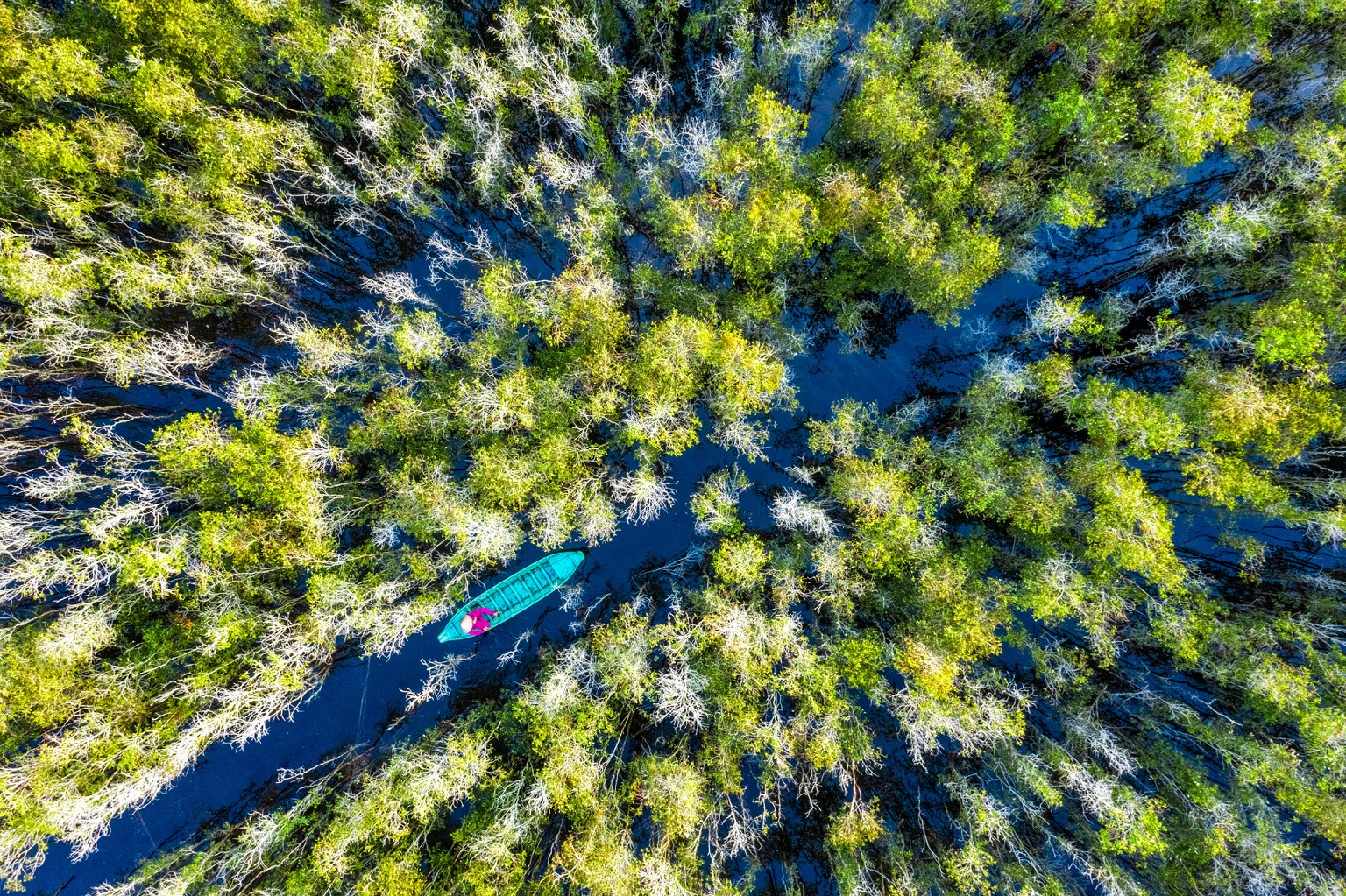
Reimagining Livelihoods for Transformative Change
Surrounding the core protected wetlands of Tram Chim are buffer zones, a maze of low-lying plains crisscrossed by waterways and canals that feed fertile rice fields.
These buffer zones are home to rice-farming and fishing communities caught in the delicate balancing act between meeting their immediate needs and conserving the very habitats that have been sustaining their families for generations. To ease the strain on the land and the people it sustains, the BES-Net pilot initiative is introducing a rice-fish farming system meant to replace the intensive triple-rice model, where fields are cultivated across three continuous seasons each year.
“Biodiversity conservation in Tram Chim and the buffer zone community are mutually dependent. A healthy ecosystem benefits local people through ecosystem services, and in turn, stable community livelihoods support effective and sustainable biodiversity conservation.” – Mr Ly Van Loi, Project Coordinator of the Mekong Conservancy Foundation
The new rice-fish farming system promotes the harmonization of human activities with the natural rhythm of the wetlands, where farmers grow rice during two seasons and then embrace the natural flood cycle during the third season, effectively transforming their rice fields into fish farms. This approach helps create more sustainable livelihoods: flooded fields hold more water and offer fertile ground for native plants to return, and the wetlands along with the species they shelter get a chance to thrive and be restored. By encouraging the revival of vital wetland plants, this system also supports the restoration of crucial bird habitats, offering hope for the sarus crane’s return to the region.
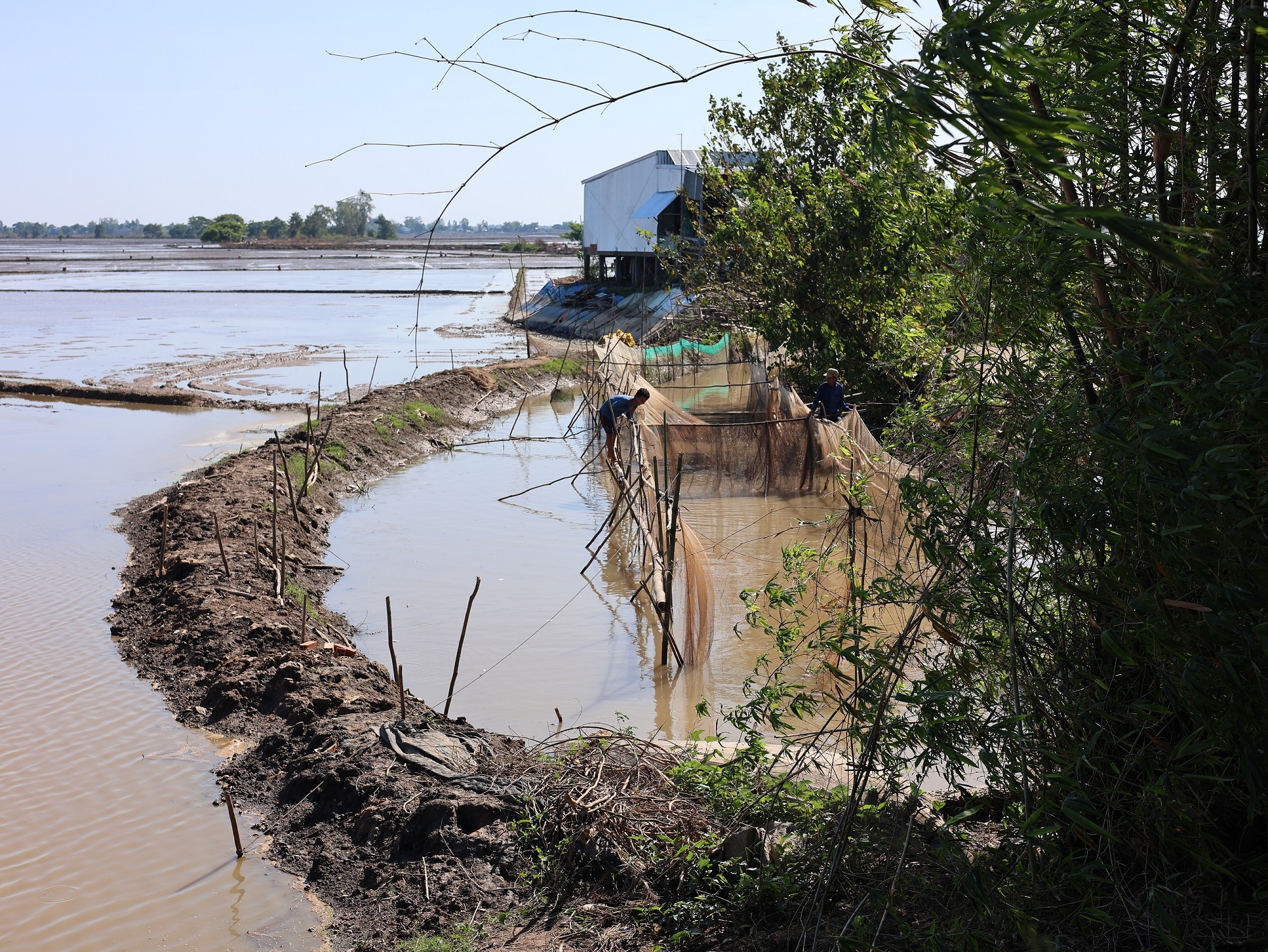
“We used to do electrofishing or set traps to catch small fish, but now we keep them and only sell the larger fish. Everyone here works together to protect and sustainably harvest, and neighbours have become friendlier with each other.” – Luu Thi Kieu Hanh, local woman from Phu Binh hamlet in Tram Chim
The conservation strategy in Tram Chim embodies the principles outlined in the IPBES Transformative Change Assessment as it’s grounded in inclusivity, equity and the ancestral connection between people and nature.
Hoang Thu Thuy, who leads this initiative on behalf of UNDP Viet Nam, explains how local community ownership leads to transformative change:
“To ensure long-term success and scalability, these initiatives actively involve and coordinate with local authorities and grassroots conservation agencies, creating a foundation for their needs to be reflected and their achievements to be recognized and expanded through local resources in the future. Our strategies being closely aligned with the 2022–2032 Provincial Plan for the Sarus Crane Conservation demonstrates strong institutional ownership and the integration of project outcomes into broader conservation efforts.”

The Nexus Approach
Even when welcome, change is never easy – especially when livelihoods are at stake – so, naturally, transitioning from triple-rice farming to flood-adaptive rice-fish farming is not without its challenges. While some buffer zone farmers are eager to embrace the shift, others hold on to their conventional farming methods, such as pesticides that affect shared resources like water and soil. The effort required to adopt new practices can feel overwhelming, but the long-term consequences of inaction for both human health and the environment are far more severe and far-reaching.
This speaks to a larger truth explored by the newly released IPBES Nexus Assessment: crises like biodiversity loss, water scarcity and food insecurity are deeply interconnected, often compounding one another.
In Tram Chim, pesticide use harms fish farms, while invasive snails thrive in stagnant water, complicating efforts further. Inclusive and practical solutions have been explored so farmers can easily integrate them into their daily lives, such as breeding ducks to control snail populations naturally, or promoting eco-friendly rice farming practices for those who persist with conventional methods.
By addressing these interlinked challenges together, UNDP’s pilot initiative in Tram Chim channels the holistic, collaborative solutions championed by the newly released IPBES Nexus Assessment.
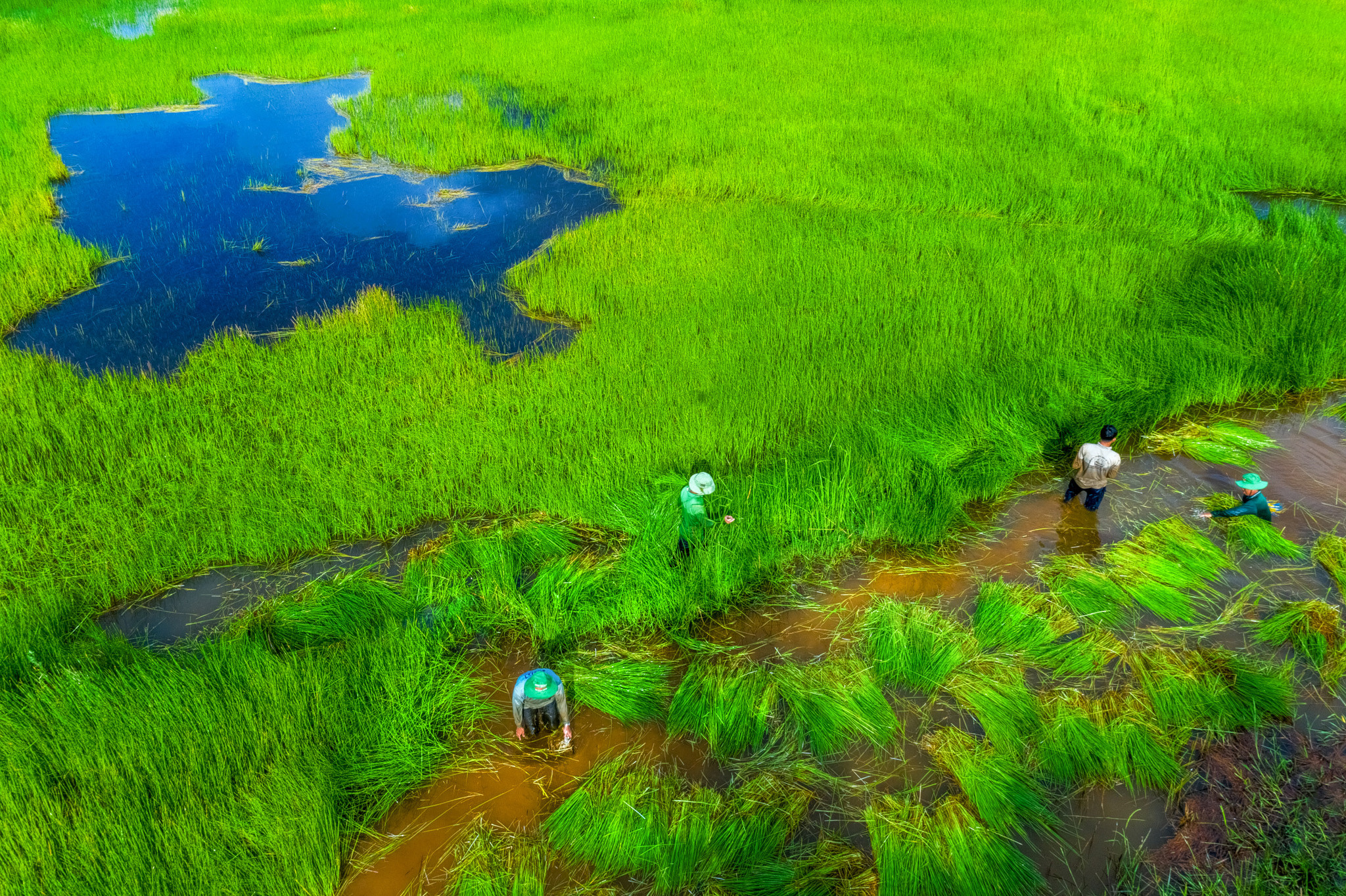
Change on the Ground, Cranes in the Sky
As the restoration work in Tram Chim National Park begins, the vast wetlands will slowly find their way back towards balance. Fields will flourish by falling in step with the natural rhythms of the flood seasons, and native plants will reclaim their place in nutrient-rich waters.
The catalytic support provided by BES-Net has given these communities unique momentum to proceed with their long-term journey towards sustainability. While challenging, each step they take will bring the ecosystem closer to restoration and their lives closer to the promise of steadier incomes.
One day, perhaps not too far from now, the sight of sarus cranes gliding across the Tram Chim skies could become a seasonal highlight again, marking the beginning of a future where people and nature can thrive together.
Footnotes
Text by: Ana Costiniu. Header photo: A crane flies in the sky of Tram Chim National Park. Photo: Hoàng Thế Nhiệm
Tram Chim National Park, Khóm 4, Tam Nông District, Dong Thap, Vietnam
© 2025 UNDP Nature
The original article can be found at: Our Shared Future by UNDP Nature – UNDP Nature
To view the full text, please visit:
- English version: A Future Shared by People and Cranes – BES Net
- Vietnamese version: Khi đàn sếu trở về by UNDP Viet Nam – Exposure
For more information about the project, please visit: Thematic Trust Fund – Biodiversity and Ecosystem Services Network (BES-Net) phase II | Internationale Klimaschutzinitiative (IKI)
From 12–14 August 2025, the seminar “Strengthening Capacity on Energy Transition” was jointly organized by GIZ, the Viet Nam National Coal and Mineral Industries Group (Vinacomin), and Viet Nam Business School (VBS) under the framework of the global Innovation Regions for a Just Energy Transition (IKI JET) project and the Clean, Affordable and Secure Energy for Southeast Asia (CASE) project.
The three-day training brought together 70 middle-level managers and specialists from both power and non-power units of Vinacomin. Participants received updates on the latest global and national energy transition developments, fuel conversion technologies, and relevant policy approaches. The sessions also provided a valuable opportunity for exchanging knowledge and experience, as well as discussing practical solutions for the future of Viet Nam’s coal industry in the context of the energy transition.
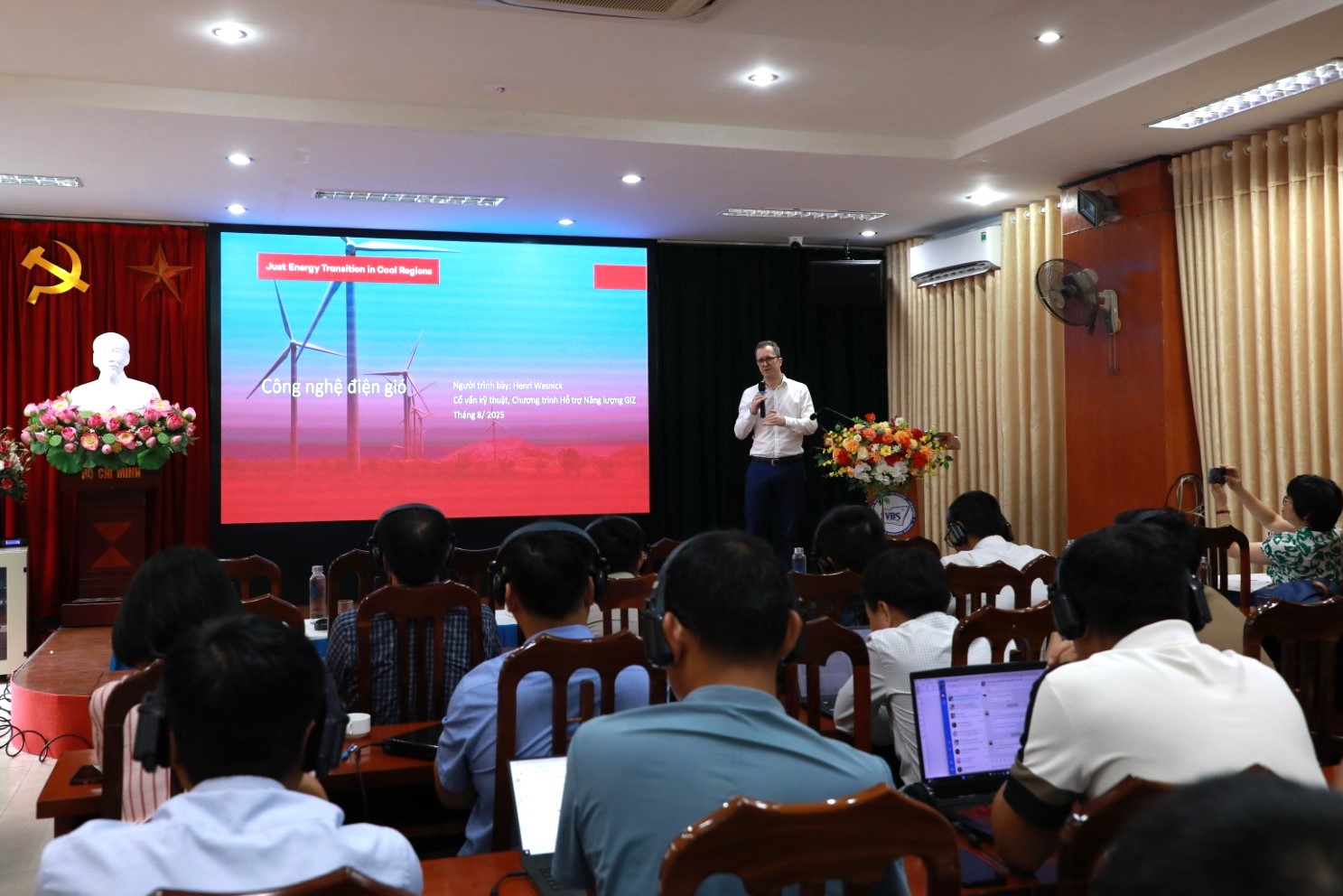
“These seminars come at the right time, addressing the challenges our corporation faces in shifting from coal power to net-zero emissions by 2050. They also open opportunities for us to engage with emerging green energy transition trends,” highlighted Mr. Nguyen Van Cuong, Head of Environmental Safety Department, Vinacomin Power Corporation.
As one of Viet Nam’s five largest power generation corporations, TKV Power operates power plants with a total capacity of 1,735 MW. Achieving net-zero emissions by 2050 is not only a pledge but a strategic direction for the Group.
By strengthening institutional capacity, updating knowledge on technology and policy, and connecting with international best practices, these seminars support Vinacomin’s gradual shift from coal mining and coal-fired power operations towards a sustainable development model in line with Viet Nam’s just energy transition strategy.
#EnergyTransition #NetZero2050 #RenewableEnergy #CleanEnergy #IKIJET #GIZ #CASE #Vinacomin #TKV
For more information about the project, please visit: Clean, affordable and secure energy for Southeast Asia (CASE) | Internationale Klimaschutzinitiative (IKI)
The Independent Institute for Environmental Issues (UfU) evaluated the requirements for the economic use of bioenergy crops in Viet Nam within the projects CPEP and CPEP 2 “Cultivation of energy plants on set-aside mining sites in Viet Nam”. The projects promoted and investigated the cultivation of energy crops on post-mining sites in Viet Nam from 2015 to 2025.
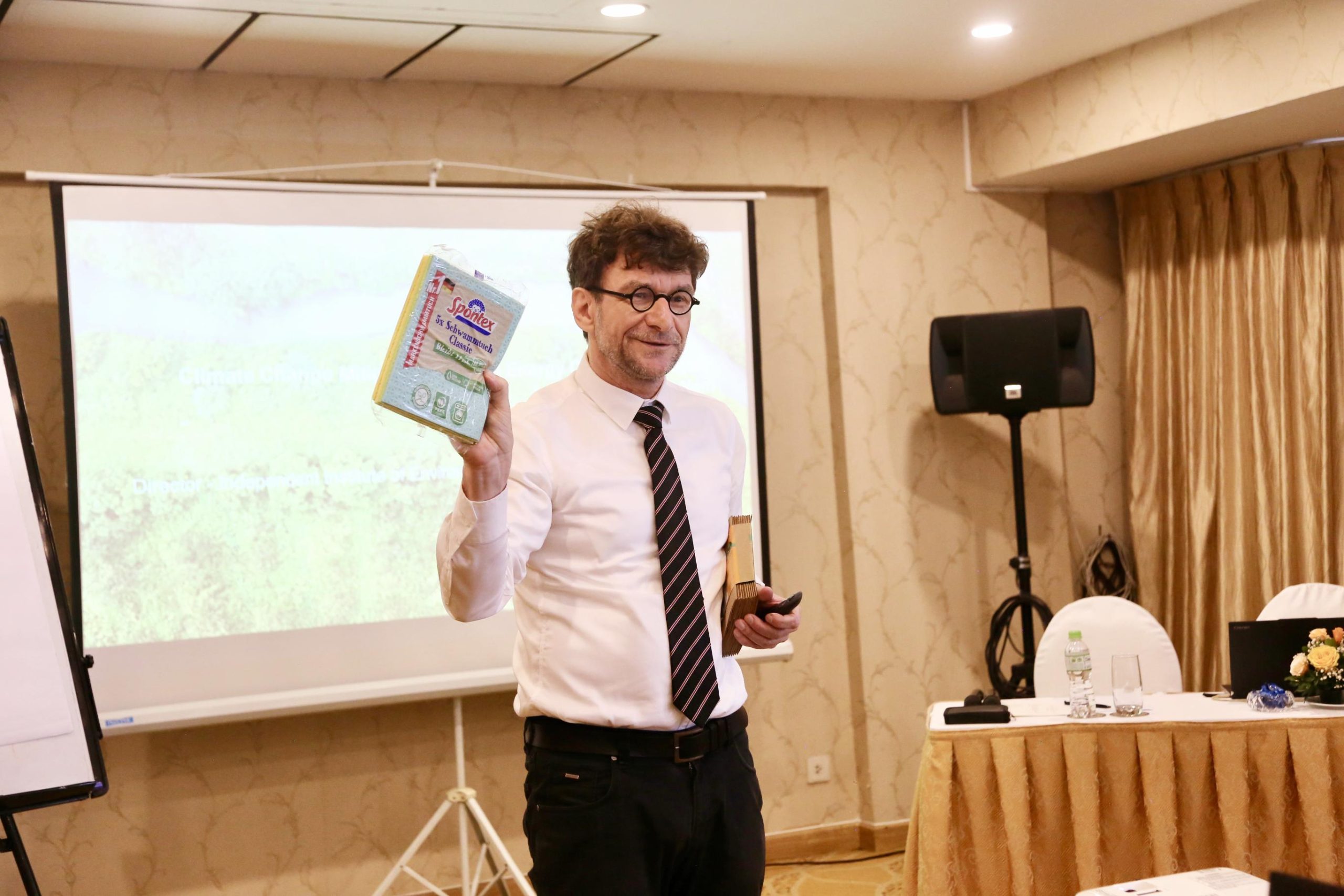
As marginal areas, post-mining sites are not suitable for conventional agriculture due to heavy metal contamination and bad soil conditions. Thus, the cultivation of energy crops on these sites does not compete with food production. The CPEP project tested different energy crops with cassava, VA06 grass and Acacia hybrid being most the suitable.
UfU summarised its analysis of the requirements for the economic use of energy crops in Viet Nam and published the results in a recent manual. The main findings are presented here.
Legal and political framework for the bioenergy market in Viet Nam
Viet Nam has established a plan to develop bioenergy, promote energy transition and reduce GHG emissions. Biofuels are considered for the transport sector, while biomass plays a key role to replace coal in power generation. Therefore, the country’s current legislation confirms that bioenergy is a national priority, essential for Viet Nam to reach its net-zero emissions target by 2050. Nevertheless, it is crucial to move from policy-making to enforcement of a specific, robust, and coherent legal framework to yield economic benefits from cultivating energy crops. This includes financial mechanisms, raw material policies, enhanced policy enforcement, and investment in Research and Development.
Viet Nam’s bioenergy market
Viet Nam still depends on fossil fuels like coal, crude oil and natural gas, which accounted for 80 percent of the total energy production in 2021. However, renewable energy sources like solar-, wind- and hydropower as well as biofuels and waste have increased in recent years and already made up 21 percent of the total energy supply in 2021. To upscale these efforts, it is important to promote technology transfer and persuade decision makers that a well-established bioethanol industry reliably contributes to the country’s energy security.
Due to an unstable supply of feedstock, only two out of seven ethanol facilities in Viet Nam currently operate with a capacity of 56,808 and 98,750 tonnes per year. Thus, the country so far misses its goal to increase the output of ethanol and biodiesel to 1.8 million tonnes by 2025. Furthermore, China’s growing demand for cassava let to a higher export price in comparison to the domestic purchase price. Consequently, cassava exports increased by 22 percent between 2018 and 2021, reducing the domestic supply. However, the cassava exports depend heavily on buyers and cannot be secured in the long run. Given this, and the fact that the ethanol plant in Dong Nai province has therefore switched its input to maize, negotiating cassava offtake contracts between farmers and ethanol manufacturers, as well as strengthening capacity-building to boost productivity, could be a viable option to ensure a stable supply of feedstock to the ethanol facilities. This needs to be accompanied by expanding the amount of bioethanol facilities operating in Viet Nam to reduce transportation costs and GHG emissions. In addition to that, growing maize instead of cassava might be another opportunity to upscale the recultivation of post-mining sites with energy plants.
In Viet Nam, the Environmental Protection Tax applied on E5 is currently just 5 percent lower than on RON95. In addition, the country even imports bioethanol from the United States and South Korea and reduced the Most-Favoured-Nations-import-tariffs for bioethanol to 15 percent in 2020 thereby impeding the domestic production. Moreover, many consumers are still afraid that E5 gasoline might damage their engines and are not aware of its environmental benefits. If the Vietnamese government wants consumers to prefer E5 gasoline, it needs to increase the price differences for example through import tariffs and CO2 taxes on fossil fuels. However, this is just feasible if the domestic supply can be upscaled to meet domestic demand in the long-run. Awareness campaigns on biofuels might improve consumers’ demand. Investigations on how to reduce fuel losses due to evaporation as well as transportation and storage costs for E5 gasoline also need to be conducted to compete with conventional gasoline.
Potential bioenergy conversion scenarios and energy crops in Viet Nam
The mean cassava yield of the CPEP 2 project (8.42 tonnes per hectare) was lower than that of the CPEP 1 project (17.5 tonnes per hectare). The average yield stated in the literature varies between 12.73 and 35 tonnes per hectare. The cassava yields of the CPEP 1 project resulted in 49 percent of GHG emission savings in comparison to the use of gasoline. In the CPEP2 project savings was 17.38 percent. This shows that higher cassava yields on post-mining sites can significantly improve GHG emissions savings. Thus, the yield of cassava for bioethanol production on marginal lands need to be increased to remain competitive, for example through breeding programs or more ecological cultivation methods such as crop-rotation or agroforestry. Moreover, methods to obtain bioethanol from agricultural residues, including cassava stems and waste pulps from starch-producing industries should be investigated to become operational and cost-efficient, thereby increasing the amount of bioethanol gained per hectare of cassava harvested.
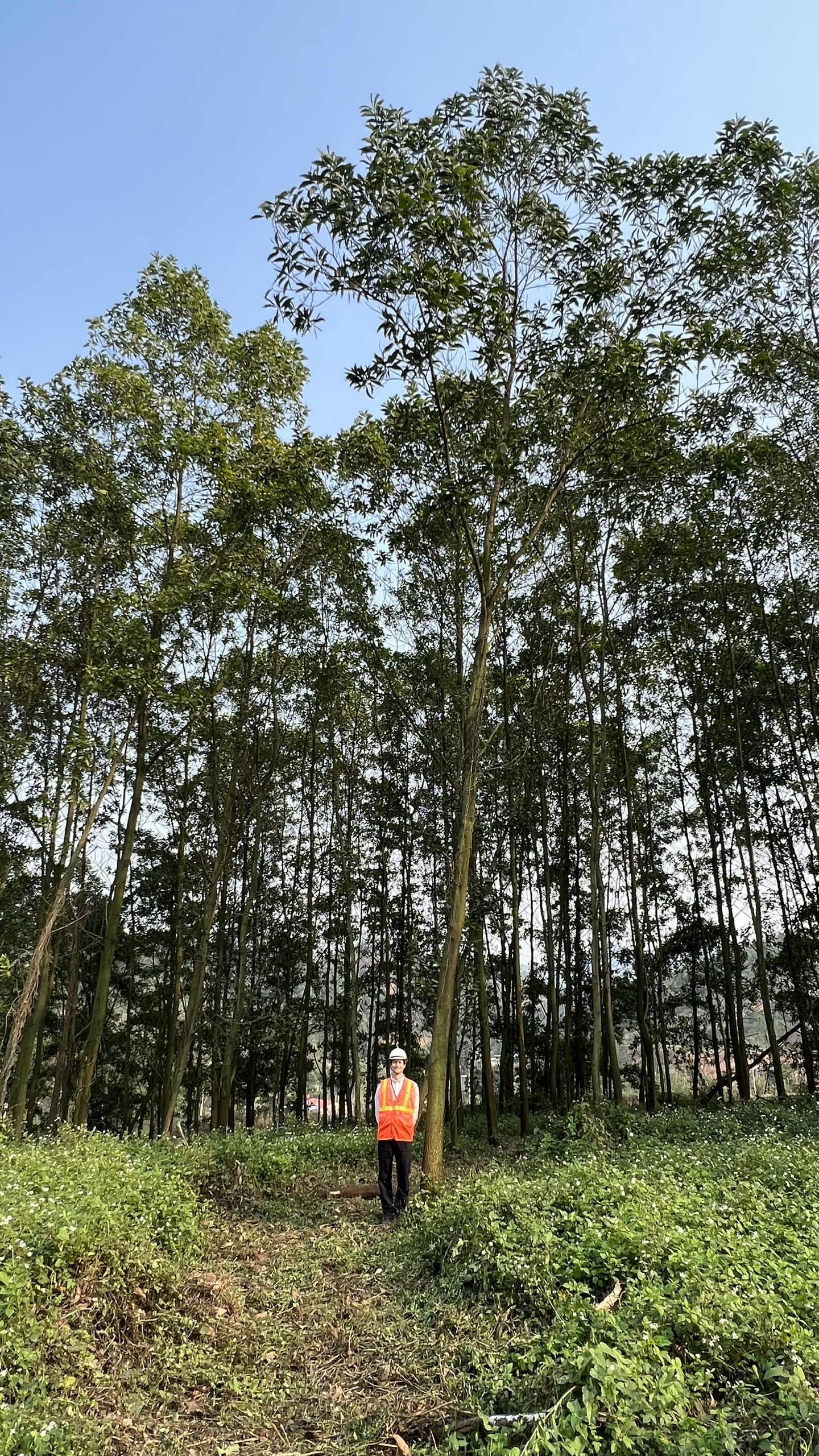
Within six years of cultivation, Acacia hybrid stands accumulated an average dry biomass of 93 tonnes per hectare. Acacia hybrid can be co-fired in coal thermal power plants to generate electricity, but further investigation is needed to improve its efficiency compared with coal combustion. However, as long as the Cost-Insurance-Freight-price of imported coal does not increase, the combustion of acacia wood is less competitive than coal. Thus, owners of coal power facilities need financial incentives through policy measures to favour acacia wood over coal. Additionally, bioeconomic utilisation pathways of acacia wood are promising and warrant further exploration, particularly for the production of biochar and lignocellusic raw materials. The main advantage of these pathways over firing is that biomass carbon stocks are mainly retained.
The dry matter yield of VA06 grass varied between 25.5 and 33 tonnes per hectare and year, making it comparable with the yields of the south-central coastal provinces. VA06 grass serves as forage for livestock while the resulting manure can be processed into biogas by small-scale biogas digesters. However, many farmers lack financial resources and tend to discharge the manure to the environment, causing additional greenhouse gas emissions and environmental pollution. On the farm, the biogas can be directly used for cooking while the digestate serves as fertiliser on the fields. Consequently, farmers in remote areas become less dependent on electricity, fossil fuels, firewood and chemical fertilisers and get the opportunity to add value to their waste. Nevertheless, the manure management practices to produce biogas need to be optimised to enhance the potential energy production for example through technology transfer, financial advice or knowledge exchange. As a means, independent inspectors might examine the biogas digesters regularly to ensure their functionality. Farmers might also share a biogas digester to split costs for construction and maintenance while benefiting from economies of scale.
Outlook for the economic use of energy crops in Viet Nam and possible legal strategies in future
Lastly, there are a total of 22,185 hectare of marginal areas suitable for growing cassava for bioethanol production in Viet Nam, which will eventually increase, because Viet Nam’s Prime Minister approved a new plan for the expansion of extracting mineral resources in the future. Increasing the cultivation of energy crops on these areas has the potential to further save GHG emissions and support the country in achieving its goal to reduce GHG emissions by 92 percent until 2050.
On 19 August 2025, UfU organised a workshop on the legal regulations surrounding energy plantations, climate protection, and the restoration of post-mining sites. The key agenda content was the technical regulations for suitable energy crops and farming practices in specific post-mining areas. This regulation was developed in CPEP and will be published by Vietnamese authorities. Furthermore, delegates at the workshop agreed that the state should develop financial mechanisms for planting and using energy trees, as well as mechanisms for participating in and benefiting from domestic and international carbon markets (under Article 6 of the Paris Agreement) for these projects.

For more details, please refer to the full manual at: https://www.ufu.de/en/downloads/manual-requirements-for-the-economic-use-of-energy-crops-in-vietnam/
For more information about the project, please visit: Cultivation of energy plants on set-aside mining sites in Viet Nam | Internationale Klimaschutzinitiative (IKI)
Contact: Niklas Müller (niklas.mueller@ufu.de); Dr. Arne Reck (arne.reck@ufu.de); Thi Thuy Nguyen (thuy@ufu.de)
IKI Project News
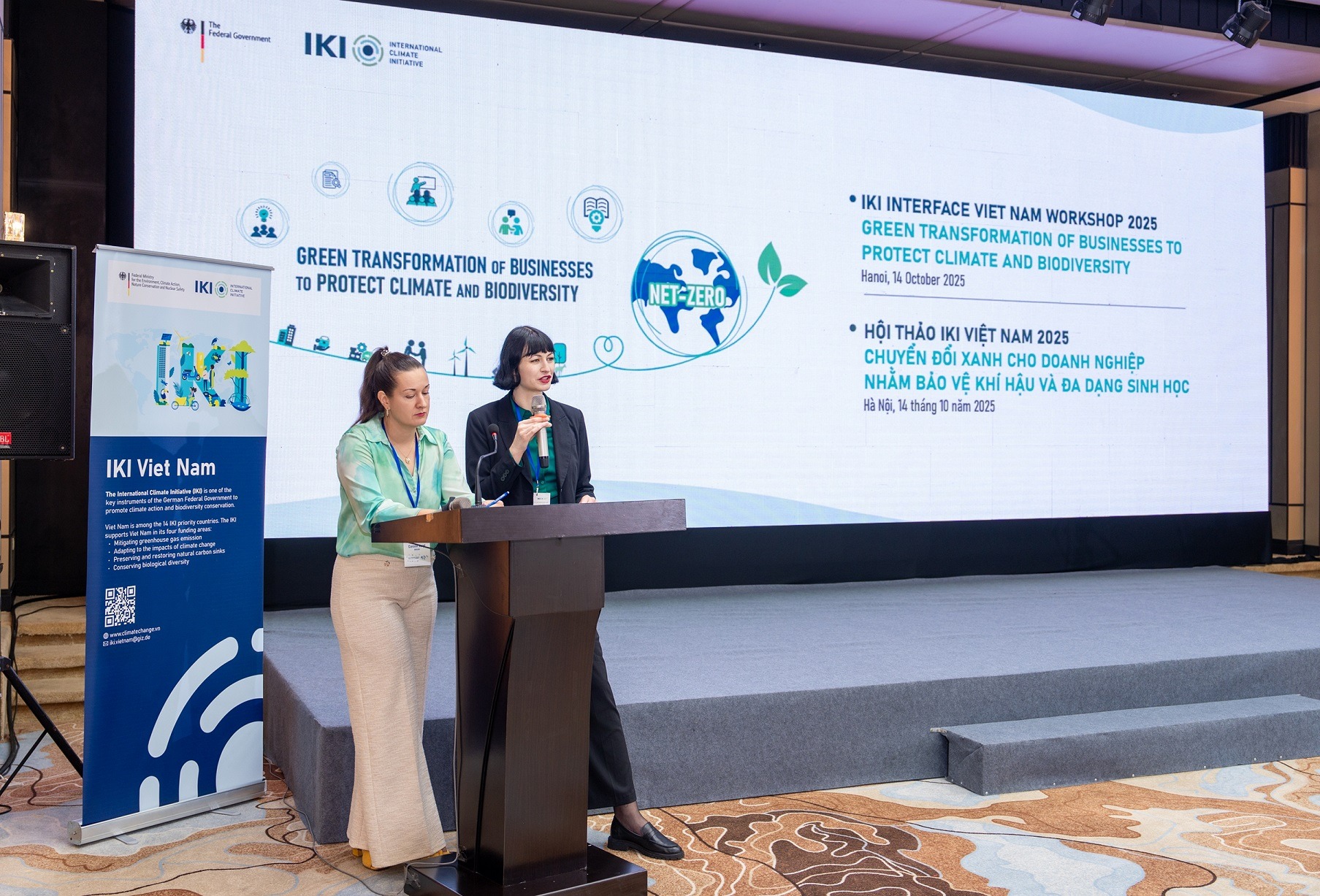
Hanoi, October 14, 2025 – The IKI Interface Viet Nam Workshop 2025, held today at the Hanoi Convention Center, convened […]
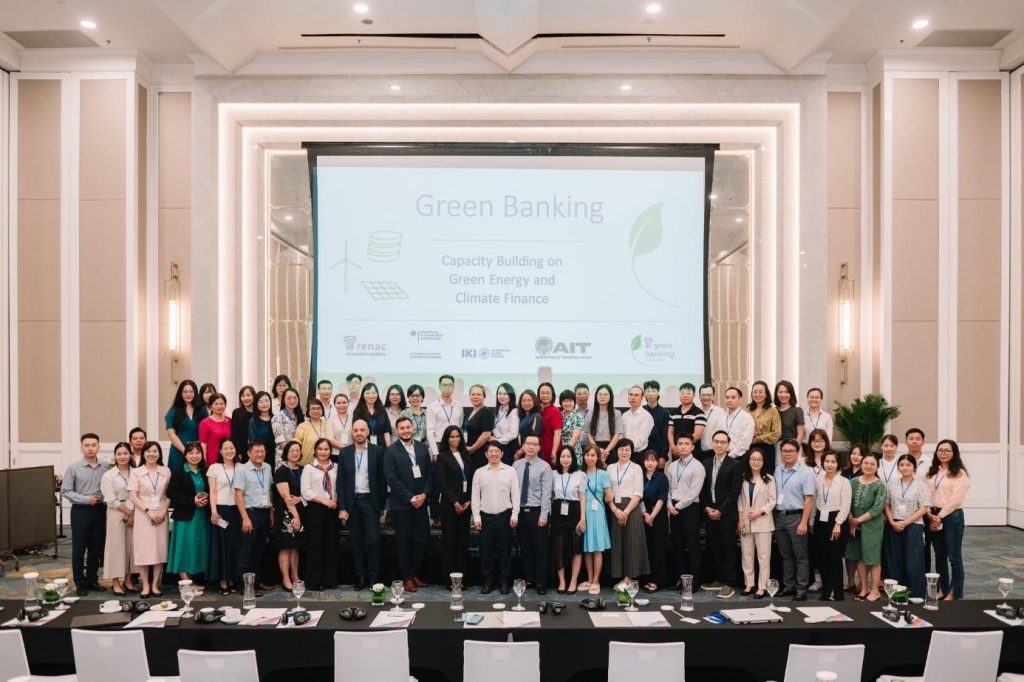
RENAC has officially launched the third phase of its Green Banking Project, a scholarship-based training programme designed to expand sustainable […]
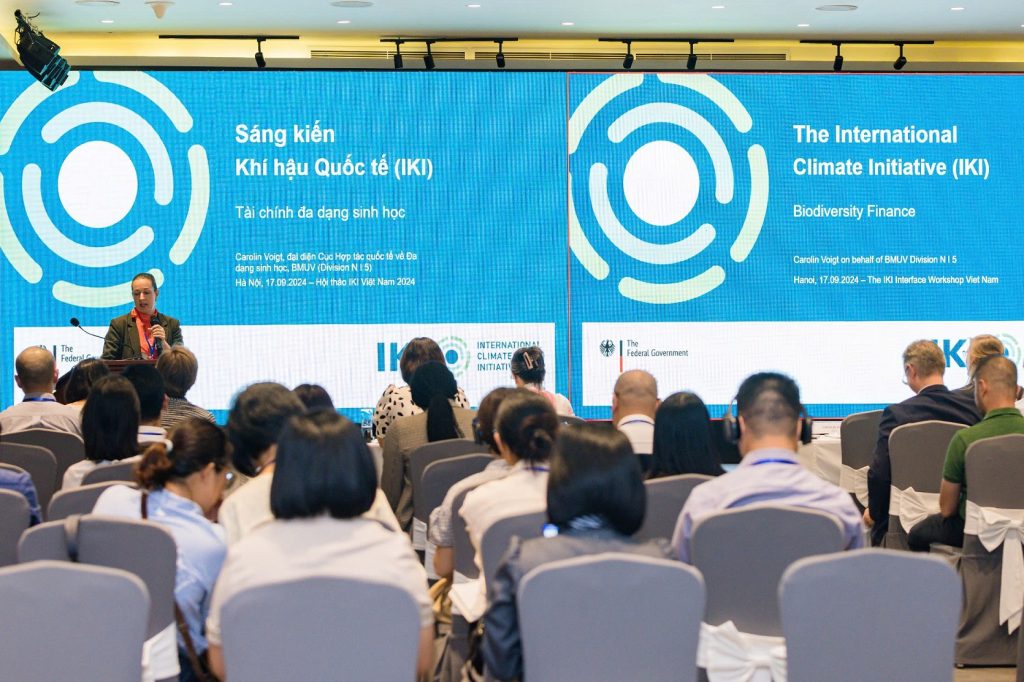
The IKI Interface Viet Nam Workshop 2025 will take place on 14 October accompanied by a networking event on the […]

It was a classic vista: the mild December sun setting over the vast wetlands of Tram Chim National Park in […]
IKI-Newsletter
Keep up with our latest news and events. Subscribe to our newsletter.
Climate and Biodiversity News

A new policy backbone for species conservation In the implementation phase of the Kunming–Montreal Global Biodiversity Framework (KM-GBF) and the […]
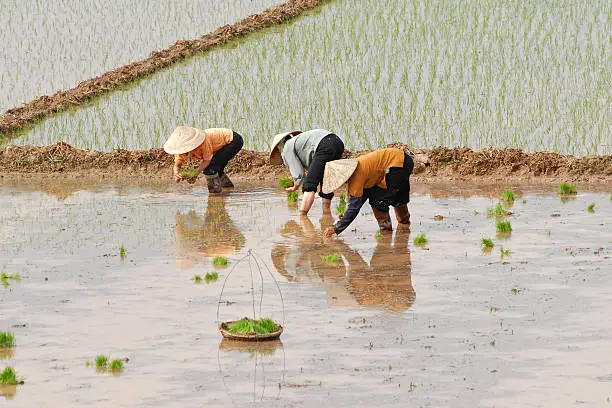
On 16 June 2025, the Vietnamese government issued Decree No. 156/2025/ND-CP, a significant update to the national credit policies for […]
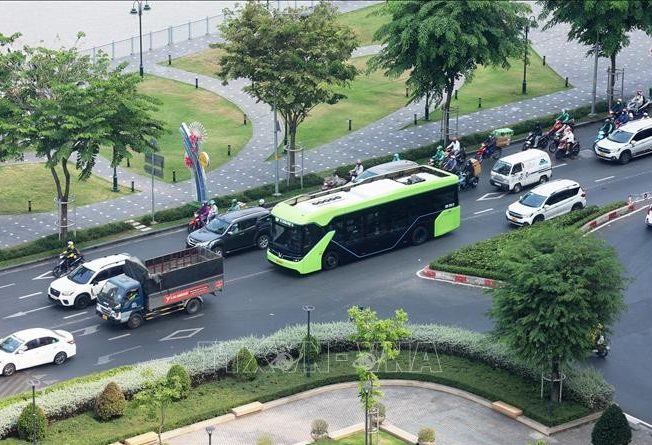
Ho Chi Minh City, 31 July, 2025 — The Ho Chi Minh City Department of Construction, in collaboration with Phuong […]
Events
We invite you to the IKI Implementer Webinar on the GBF Monitoring Framework. Date and time: Friday, 19 December 2025, […]
We would like to inform you that the 2025 IKI Interface Viet Nam Workshop is scheduled to take place on […]
The IKI Interface Viet Nam team invites you to the IKI Implementer Meeting on Gender Mainstreaming: Sharing Good Practices from […]
We invite you to an IKI Implementer Meeting on the Global Biodiversity Framework (GBF) Monitoring in Mechanism and Indicators. […]
GIZ Country Office, 6th Floor, Hanoi Tower, 49 Hai Ba Trung Street, Hanoi, Viet Nam
We invite you to an IKI Implementer Meeting on Viet Nam’s Emission Trading Scheme (ETS). Date and time: Tuesday, […]
GIZ Country Office, 6th Floor, Hanoi Towers, 49 Hai Ba Trung Street, Hanoi, Viet Nam
Recent Publications
Viet Nam’s electricity sector set to expand to 500,000 full-time jobs by 2035, up from around 300,000 today. This surge reflects the transformative scale of the country’s energy transition according to Decision 500/QD-TTg 2023 on National Power Development Plan Nr 8 dated 15 May 2023.
👉 Where will these new jobs come from? What does this mean for existing workers?
GIZ ESP’s new report “Projection of Labour Force for Viet Nam’s Energy Transition” explores potential development of the labour force in the power sector in Viet Nam and related industries under different scenarios stated in PDP8 and JETP:
✅ Solar and wind will lead job growth
PDP8 set an ambitious capacity for solar and wind power, with specific targets of 12,836 MW and 27,880 MW for solar and wind capacity by the 2030s, respectively. As a result, over half of the power sector’s direct workforce is expected to be employed in solar and wind technologies. This requires investment in skills and training.
⚠️ Workforce transition from coal to more sustainable sectors
As the coal industry for power gradually scales down, the labour demand will decline. However, the rapid growth of the renewable energy sector and other green economy is creating new job opportunities. With timely policies and reskilling programs, coal workers can successfully transition to sustainable livelihoods, supporting social stability and regional development.
🌏 Imports now, localisation later
While Viet Nam currently relies on imported components, improving human capacity will enable greater participation in the renewable energy supply chain. In the long term, localisation will be key to building a resilient and self-sustaining industry.
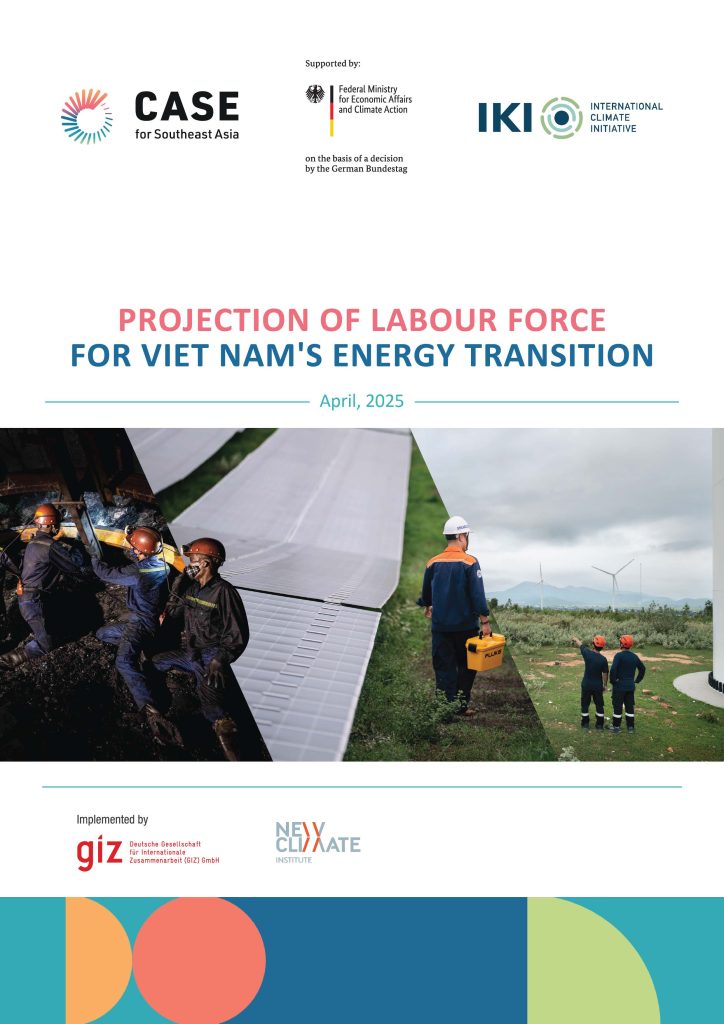
Words shape the world—and our climate story. 🌏
📝 Climate and Energy Terminology Handbook for Media and Journalists is now available in Vietnamese!
Whether you’re a policymaker, energy expert, journalist, or student, precise language is crucial to drive real action.
➡️ Download the handbook and speak the language of energy transformation
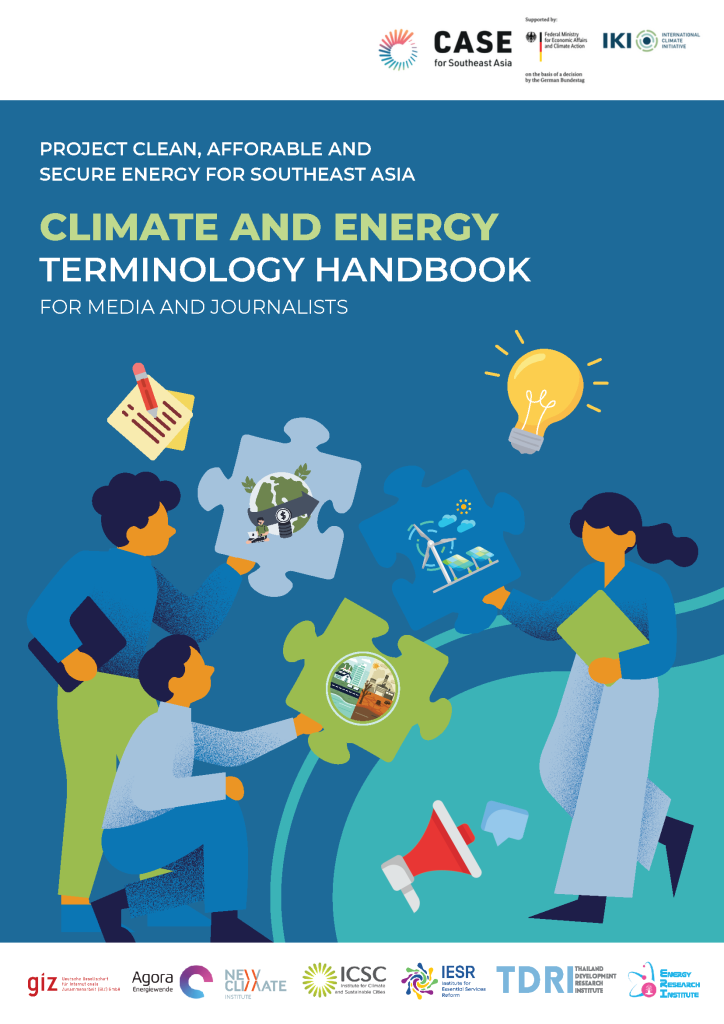
The Green Cooling Initiative III (GCI III), spearheaded by the German Federal Ministry of Environment, Nature Conservation, Nuclear Safety and Consumer Protection (BMUV), is a comprehensive and ambitious global endeavor designed to advance sustainable cooling practices worldwide. This initiative targets key countries, including Viet Nam, with the goal of promoting the adoption of energy-efficient cooling technologies that use natural refrigerants. Deutsche Gesellschaft für Internationale Zusammenarbeit (GIZ) plays a pivotal role as the primary implementing agency for this project.
Through these collaborative efforts, GCI III aims to bolster the ability of stakeholders to adopt and implement green cooling solutions effectively. This, in turn, contributes significantly to advancing Viet Nam’s sustainability agenda and achieving its climate targets, positioning the country as a leader in the global movement towards environmentally friendly cooling technologies.
This assignment centers on elaborating a market study and developing a transformation plan for green cooling technologies in the domestic and retail refrigeration subsectors under the food cold chain sector in Viet Nam.

Viet Nam is a rapidly developing nation facing both population growth and the impact of climate change with over 99 million people and a high population density, Viet Nam’s economic expansion and urbanization contribute to an escalating demand for cooling. It plays a major role in economic and social development including the food processing, freezing, electronics and pharmaceutical industries. However, this growth also intensifies the environmental strain, since the cooling sector is one of the largest sources of greenhouse gas (GHG) emissions. In 2016, it constituted 9% of the country’s total emissions, emitting 28.7 Mt CO₂eq (GIZ, 2019).
Addressing this issue becomes the objective of the project, aiming to conduct a comprehensive market survey and develop a transition plan that prioritises green cooling technologies, particularly within the domestic and commercial refrigeration subsectors. The project focuses on the cold food supply chain and aligns with the dual objectives of economic growth and environmental sustainability. Through strategic adoption of green cooling technologies and low GWP refrigerants, this initiative not only aims to revolutionise cooling practices but also seeks to foster a sustainable, resilient, and environmentally conscious trajectory for Viet Nam’s development.



